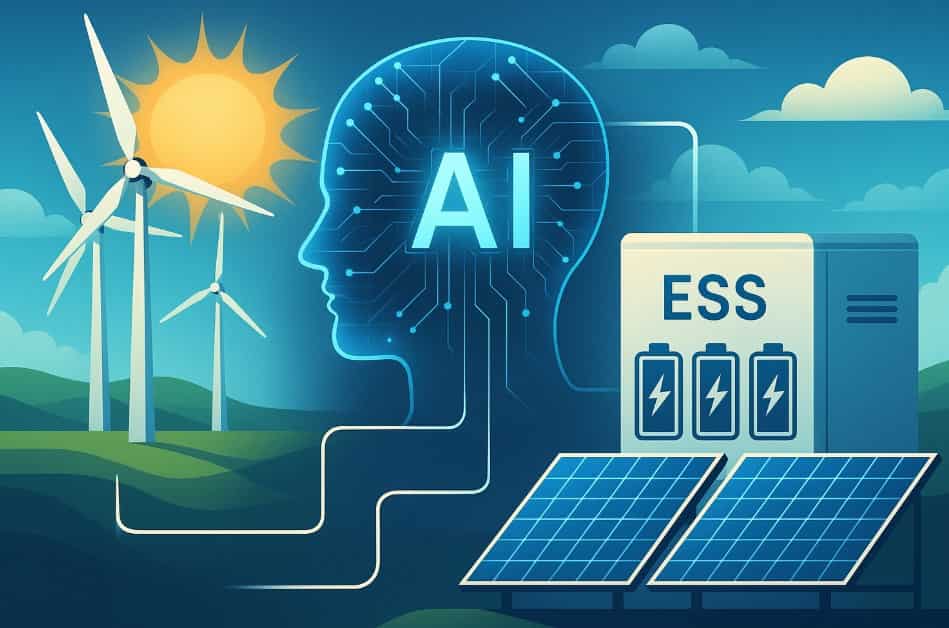
De la lumière du soleil au stockage : améliorer les énergies renouvelables grâce aux systèmes de stockage d'énergie pilotés par l'IA

Le paysage énergétique mondial connaît une transformation rapide. Face à la montée en puissance des énergies renouvelables comme le solaire et l'éolien, un défi majeur demeure : comment stocker et gérer efficacement cette énergie pour garantir stabilité, efficacité et fiabilité. C'est là que… Systèmes de stockage d'énergie pilotés par l'IA (ESS) entrent en jeu, servant de pont essentiel entre la production d’énergie renouvelable et la consommation durable.
Les sources d'énergie renouvelables sont par nature intermittentes. L'énergie solaire ne produit de l'électricité que pendant la journée, tandis que l'énergie éolienne dépend des conditions météorologiques. Sans stockage adéquat, cette variabilité crée une instabilité des réseaux électriques. Systèmes de stockage d'énergie (SSE) relever ce défi en stockant l’excédent d’énergie lorsque la production est élevée et en le libérant lorsque la demande atteint son pic ou que l’offre chute.
Les solutions ESS traditionnelles, telles que les batteries lithium-ion, contribuent déjà à équilibrer l'offre et la demande. Cependant, l'intégration Intelligence artificielle (IA) améliore leurs performances, permettant une gestion de l’énergie plus intelligente, plus adaptative et prédictive.
L'IA introduit une couche d'intelligence qui permet aux systèmes de stockage d'énergie d'aller au-delà des fonctions de charge et de décharge de base. Parmi les principaux avantages, on peut citer :
Analyse prédictive de la demande énergétique
Les modèles d'IA peuvent analyser les prévisions météorologiques, l'historique de consommation et les tendances du marché pour anticiper la demande énergétique future. Cela permet de garantir que les systèmes de stockage sont prêts à faire face aux pics ou aux baisses de production à venir.
Optimisation en temps réel
L'IA surveille en permanence l'état du réseau et ajuste le fonctionnement des systèmes de stockage d'énergie (ESS) en temps réel. Par exemple, elle peut décider de stocker ou de libérer de l'énergie en fonction du prix de l'électricité, de la production renouvelable ou des besoins en matière de stabilité du réseau.
Durée de vie prolongée de la batterie
Des algorithmes intelligents peuvent optimiser les cycles de charge et de décharge pour minimiser la dégradation de la batterie, prolongeant ainsi la durée de vie de l'infrastructure ESS et réduisant les coûts.
Intégration aux réseaux intelligents
En se connectant aux réseaux intelligents, l'ESS piloté par l'IA permet une coordination transparente entre les sources renouvelables distribuées, les services publics et les utilisateurs finaux, améliorant ainsi la résilience énergétique globale.
L'ESS alimenté par l'IA n'est pas seulement un concept : il est déjà appliqué dans divers scénarios du monde réel :
Fermes solaires : L’IA garantit que l’excédent d’énergie solaire généré pendant la journée est stocké efficacement pour être utilisé la nuit.
Centrales éoliennes : En prévoyant les régimes de vent, l’IA aide à équilibrer la variabilité de la production avec un contrôle précis du stockage.
Micro-réseaux : Les communautés et les sites éloignés utilisent des systèmes de stockage d’énergie (ESS) basés sur l’IA pour atteindre l’indépendance énergétique et la résilience en cas de panne.
Infrastructure de recharge pour véhicules électriques : Le stockage piloté par l'IA prend en charge les réseaux de charge rapide en équilibrant la demande du réseau avec l'intégration des énergies renouvelables.
À mesure que l'adoption des énergies renouvelables s'accélère, l'importance du stockage intelligent de l'énergie ne fera que croître. Des technologies émergentes telles que apprentissage par renforcement, informatique de pointe et intégration de la blockchain améliorera encore l’efficacité et la sécurité des systèmes de stockage d’énergie pilotés par l’IA.
La vision est claire : un écosystème énergétique durable, fiable et intelligent, où les énergies renouvelables et les systèmes de stockage alimentés par l’IA fonctionnent de concert. Cette synergie permettra non seulement de décarboner l’énergie, mais aussi de la rendre plus abordable et accessible partout dans le monde.
abonnez-vous à nous pour profiter des prix des événements et obtenir certains des meilleurs prix.
 réseau ipv6 pris en charge
réseau ipv6 pris en charge

